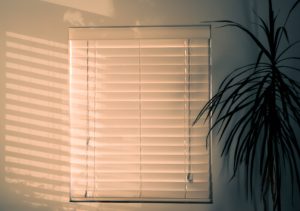Unhealthy Products in Our Children’s Rooms
I often sit at my son’s desk when I write blogs. While he’s away to college, I feel that maybe sitting here I can absorb some of his inspiration or creativity—doesn’t quite happen. Maybe I just somewhat focus better.
His desk was bought at a time when I wasn’t aware of the materials used in making common goods and is made of MDF (medium density fiber) board. This is an engineered wood obtained from wood residues turned into wood fibers and further mixed with wax, plus a resin binder.
Wikipedia says that MDF is “typically made up of 82% wood fiber, 9% urea-formaldehyde resin glue, 8% water, and 1% paraffin wax.” By applying high temperature and pressure to this composition, MDF panels are made.
Formaldehyde is a major trigger for indoor allergies. So a few days after delivering our babies, we bring them home to a nicely decorated room, believing it’s a healthy beginning. In reality, we unknowingly bring them into a territory that can trigger their allergies (if there is a predisposition).
I couldn’t convince my son to change his desk, he happened to find it very appropriate for his needs. His stronger argument was the fact he was never affected by any allergies. There are very few limitations about what I could change in our home, and the desk was one of them. I did manage almost everything else, despite the many complaints and protests I received.
Looking around, the rest of the furniture in his room it’s made of solid wood, a lot heavier and more expensive. We were just purely lucky, we didn’t like what we saw in other baby furniture stores. We also went back to the same place to order his teen bed.
A few years ago, when he got close to being 6′ feet tall, a new bed was in order. By then I knew a lot more and made sure we got the bed from proper materials. The mattress was just as important, as many conventional brands release formaldehyde and other VOC’s.
Fortunately, there are a few brands that have organic mattresses, not posing any of these risks. His linens (and ours) are all cotton made, and only more recently I learned the importance of something I dismissed for a while: organic cotton.
 A lot of the children’s linens, blankets, pajamas, and clothes (made from the synthetic polyester) are treated with toxic flame retardants. Cotton it’s in itself a flame retardant, just as wool is as well.
A lot of the children’s linens, blankets, pajamas, and clothes (made from the synthetic polyester) are treated with toxic flame retardants. Cotton it’s in itself a flame retardant, just as wool is as well.
A lot of people may think all these healthy items are too expensive, and to a certain extent, it’s true if we only look at the price tag. But because they can contribute to our sickness, we may need to reconsider their price.
Now, let’s think about the distress of the sick kid and the anxiety and aggravations for any parent when the child is sick; the time spent at doctors’ office or emergency rooms; not to mention the piling medical bills from deductibles and copays, for the numerous and unforeseen tests and procedures.
If we take all these into account, maybe a healthy product is already a sale item. These brands also have true sales and interest-free extended payments options.
I turn my gaze out the window and then look at the shade set mid-way. The first blackout shade for this window I ordered also at a time when I didn’t know much about the many chemicals used to create certain qualities. It had a silver coating to block the strong sunlight that hit his room in the morning, useful when he wanted to sleep later on week-ends.
During sunny days he often had a headache upon waking up, taking about 30-60 min to spontaneously resolve and occasionally needing something like ibuprofen for relief. Moreover, when I used to walk in his room during sunny morning there was an unpleasant smell, something like heated colored crayons (Crayola, RoseArt, or whatever other brands there may be).
This unpleasant odor was much less noticeable when the shade was pulled all the way up or during rainy days. I couldn’t figure out what the silver-looking coating was made from. I just replaced the shade with a different brand that didn’t stink at all under similar circumstances. Maybe the blackout effect was not as powerful as the previous one, but it was strong enough for a teenager—they’re known to sleep really deep.
Today, sitting at his desk to write this post, that Crayola odor hits my nose again and couldn’t understand where it was coming from. Years ago I threw away all the crayons from his room (and every last one found in the house), before replacing the shade. At that time, all the drawers of his desks, all the shelves in his room were checked to make sure there were none left.
When I took out everything from the pencil holder on his desk, I realized that smell was coming from this. Having had crayons in it for a while, this smell was impregnated in the cloth lining the holder. I have an identical one in our computer room and that was fine. So I had to throw away the smelly one.
I always noted crayons had a smell I didn’t like. They’re made from paraffin wax and colored pigments. In the post about candles I wrote that paraffin candles (the cheapest ones on the market), release toxic substance such as benzene and toluene even when not lit. This is probably what happens with these coloring crayons. Some of the crayons had also small amounts of another toxin, cadmium, when tested.
Coloring used to be a major part of childhood activities, at least until the smartphones and tablets became so popular. Probably there are safer options for children. The more classic coloring crayons made of wood, still have a pigmented wax insert, I presume that may limit the paraffin wax emissions of toxic substances.
The rug is made of wool and not treated with flame retardants. These are usually applied to upholstery and mattresses and not just kid items. The chemicals in flame retardants are toxic for all of us, and make the fire-fighters’ job more difficult.
If anything is suspected to cause an unpleasant symptom, excluding it for a while (like colored crayons), and reintroducing them later on can give a good idea if that particular item has a contribution.




